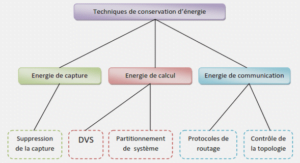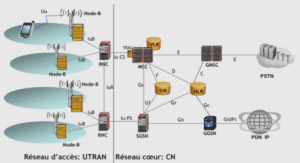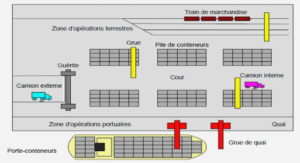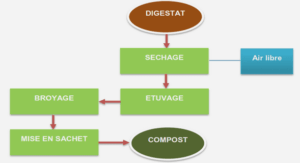Applications
VCSELs are now used in a wide range of applications in the optoelectronic and telecommunication industries, because of their competitive advantages with respect to EELs. In fact, due to their symmetrical structure, VCSELs emit a circular beam which allows easy coupling to optical fibers. Very low threshold currents (< 1 mA) can be achieved due to small cavity volume, hence increasing VCSEL’s modulation capabilities [10]. Most interestingly, the vertical emission from the substrate allows fabricating dense two-dimensional (2D) VCSEL arrays which are very attractive in a number of applications including parallel high speed optical communication links, optical interconnects, optical computing, optical switching and signal processing. In addition, an on-wafer testing can be performed on 2D VCSEL arrays before they are separated into discrete devices, hence substantially reducing the production cost [10].
An extensive research has been undertaken to fabricate VCSELs for dedicated applications in the long and mid-wavelength windows to infra-red, visible or even ultra-violet ranges [10]. Long-wavelength VCSELs emitting in the 1.2-1.5 µm window are very promising for single-mode-fiber metropolitan and even wide area networks [37]. VCSELs emitting around 0.85 µm are currently key devices in the short distance local area networks (LAN) using multimode silica-based fibers [38]. There is a growing interest in fabricating multiwavelength VCSEL arrays operating around 0.85 µm due to their potential in high bit rates (> 10 Gb/s) wavelength division multiplexing (DWM) technologies [39]. On the other hand, red-color VCSELs emitting at around 0.65µm are very attractive for the short-distance Gigabit, low cost, data links using plastic optical fibers [40]. Red-color VCSEL emitting in the range of 0.63µm-0.67µm are interesting for the video disk system. In the green-to-UV window, VCSEL may be useful for high density optical memories.
There are interesting application areas where VCSELs are also expected to play a major role. For instance for wavelength-tunable lasers, a 2D continuous tunable VCSEL using a microelectromechanical system [41] or an electrothermal system [41] have been demonstrated. For signal processing, VCSEL-based all optical format conversion using polarization switching techniques has been demonstrated. However the system requires a complexconfiguration system for polarization control [42].
Despite the fact that VCSELs are expected to play a key role in the growing photonics market, the issue of polarization instabilities has still to be addressed. This is mostly the case in photonics integrated systems in which VCSELs may be subject to external perturbation. In the following chapter, polarization properties of a free-running VCSEL are presented before investigating the situation in which an external perturbation is considered. Asmentioned in our introduction, we will mostly focus on the case of a VCSEL subject to external optical injection.
Polarization properties of VCSELs
In Chapter 2, we focussed on the difference between VCSEL and the conventional EEL in terms of their geometrical structure and emission properties. In particular, we mentioned that, due to their symmetrical structure, VCSELs exhibit intriguing polarization properties which may strongly affect their operation. In this chapter, we first investigate polarization switching (PS) properties of a free running VCSEL. By free-running, we mean a standing alone, direct-current (DC)-biased VCSEL, exempt of any external perturbation. We first review the physics underlying the PS mechanism and then present a theoretical model which supports PS. We study the VCSEL polarization switching behavior by analyzing the numerically computed as well as experimental polarization-resolved light-current characteristics. We then introduce the issue of semiconductor lasers under external perturbations in general, i.e., when the laser is subject to current modulation, to optical feedback from an external mirror or to optical injection from another laser.
Previous results reporting the possible effect of these perturbations on the VCSEL polarization properties are reviewed. We pay a particular attentionto optical injection which mostly concerns our thesis.
Polarization switching
While describing the emission properties of VCSELs in chapter 2, we mentioned that despite their geometrical symmetry, a small unintentional anisotropy, introduced during the manufacturing process, explains the existence of two preferential linear orthogonal states [43, 44]. The two eigen polarization states are characterized by slightly different refractive indices [43, 44]. Indeed, the existence of this birefringence plays a key role in the VCSEL’s polarization properties. Choquette et al. [36] experimentally demonstrated that near threshold, VCSELs emit in the fundamental transverse mode along one of the two orthogonal polarization states (denoted 90 o in Fig. 3.1.1, left panel). At such injection current levels, this is mostly attributed to a better overlap between the fundamental cavity modes and the material gain [31].
As the injection is increased, a polarization switching to the orthogonally polarized, frequency shifted, fundamental mode can be observed. For higher currents, as also reported by Hasnain et al., higher order transverse modes may also be excited, typically with a polarization orthogonal to that of the fundamental mode [29]. Here, we focus our attention on the physical mechanisms which underly the switching between fundamental transverse modes. We review the state of the art of experimental as well as theoretical studies which have been carried out by several research groups in order to elucidate polarization switching in VCSELs.
Semiconductor lasers subject to optical feedback
When compared to conventional gas lasers, semiconductor lasers are characterized by a much higher efficiency of light that is coupled out of the cavity.
As already mentioned in Section 2.1, due to the difference in refractive index between the active medium and the environment, about 70% of the total light intensity escape from the cavity. Thus semiconductor lasers are “open” to the outside. Furthermore, due to intrinsic characteristics such as high gain active medium and self-phase modulation, laser diodes are affected by the coupling of external light from optical feedback or optical injection. The seemingly simple configuration of a laser diode with optical feedback is a delay system which may exhibit complex nonlinear instabilities [80, 81, 82].
The study of such a system is vital, for instance, for optical communications in which back reflections from an optical fiber may severely affect laser emission properties. Basically, the laser response to optical feedback depends on how the intracavity laser field is coupled to the delayed field which reaches the laser cavity after an external round-trip time τ ext = 2L/c (L is the external cavity length, i.e., the distance between the laser output facet and the external reflector, while c is the light speed in the external cavity medium). The delay τ ext and the feedback strength are external key parameters which drive the feedback-induced laser dynamics [82]. Interestingly, by adequately controlling the external cavity length and the feedback strength, it has been demonstrated that optical feedback can be used to achieve laser linewidth narrowing [83], which is advantageous for optical communication and interferometric fiber sensor systems. It is worth noting that other intrinsic laser characteristics such as the intracavity round-trip time τ in , the relaxation oscillation frequency f RO and the phase-amplitude coupling (usually accounted for by the so-called α-factor) plays a determinant role in the response to optical feedback [80].
Depending on the feedback strength and the distance to the external reflector, five qualitatively different regimes (I-V) have been clearly identified [82]. The so-called regime I is observed for relatively low feedback strength and is characterized by either spectral narrowing or broadening, depending on the phase of the feedback. In the so-called regime II and depending on the feedback strength level, the laser may undergo mode hopping or spectral broadening. Over a small range of moderately higher feedback strength, the laser exhibits the so-called regime III for which a single-mode operation, characterized by narrow line emission and suppression of mode hopping, is observed. In Regime IV, which occurs for relatively larger feedback strengths, there is a substantial broadening of the laser linewidth (typically from hundreds of MHz to about tens of GHz) and the laser exhibits the so-called coherence collapse, i.e., the emission is characterized dy a dramatic reduction of the coherence length [81]. In the coherence collapse regime, the laser exhibits a dramatic linewidth broadening (by a factor of more than 1000) [81] and may undergo undamped relaxation oscillation dynamics [82]. For much higher feedback strengths, the laser dynamics is dominated by a narrow linewidth emission and operates mainly in the external cavity mode (regime
V). The feedback-induced laser dynamics can be harnessed by controlling the optical characteristics of light in the external cavity. This can be achieved by using optical devices such as a half-wave plate for polarization-rotated feedback [84], a phase-conjugating mirror [85] for phase-conjugate feedback, or even by inserting an optical filter in the external cavity to realize filtered optical feedback [86]. When the external mirror is replaced by a movable grating element, stable single-mode compound external laser with a tunable wavelength can be achieved.
In the coherence collapse regime, the feedback-induced instabilities may consist of low frequency fluctuations (LFF) [87, 88], in comparison to the underlying relaxation oscillation frequency. LFF are denoted by low-frequency time-averaged intensity dropouts followed by relatively rapid recoveries. They are typically observed for sufficiently long external cavities (typically > 1 cm) and with moderate feedback strength. For shorter external cavities (for which the external cavity length is such that f RO τ ext ≪ 1), feedback-induced high-frequency self-oscillations (in the range of tens of GHz) have been reported as a result of a self-locking mechanism of two compound-cavity modes which have almost equal cavity losses [89]. Another intriguing nonlinear dynamics different from the LFF and which has been observed in the short external cavity configuration is the so-called regular pulse package (RPP): the light intensity exhibits a fast regime of high-frequency pulses in the GHz range intensity which are modulated by a relatively low-frequency signal (ofhundreds of MHz) [90, 91, 92].
External optical injection in VCSELs
We provide here a summary of the main research achievements about optical injection in VCSELs. In addition to the injection power and the frequency detuning between the master and the slave laser as injection control parameters, the polarization of the injected beam with respect to that of the free running VCSEL plays also a key role. If one assume that the freerunning VCSEL operates in the fundamental mode regime, two main injection schemes are usually considered: the so-called parallel and orthogonal optical injection configurations. In the parallel injection scheme, the polarization of injected field is parallel to that of the free-running laser while in the orthogonal injection case the injected field polarization is orthogonal to that of the free-running VCSEL.
Optical injection in VCSEL was investigated for the fist time by Pan et al. using an orthogonal optical injection scheme [120]. In this pioneer-ing work, the VCSEL was biased such that it emitted a single transverse mode, linearly polarized along the [011] cristal axis (horizontal). For the adopted bias current, the offset between the lasing horizontal low-frequency (LF) mode and the strongly depressed, high-frequency (HF), vertical transverse mode was of (ν HF − ν LF = 9 GHz). The VCSEL was then injected by a tunable external cavity master laser, emitting along the vertical polarization axis. Optically induced polarization switching was observed whenscanning the injection power for a wide range of frequency detuning between the master laser and the horizontal free-running VCSEL mode. The obtained results showed that the minimum switching power was achieved when the frequency of the master laser corresponds to the frequency of the vertically polarized cavity mode (ν HF ), i.e., when the frequency detuning coincides with the VCSEL birefringence (9 GHz). Is was observed that the VCSEL birefringence influence qualitatively how optical injection-induced polarization switching (PS) is achieved. In fact, it was observed that if the injection power is scanned when the master laser frequency was set to the low-frequency side of ν HF , a bistable switching from horizontal to vertical polarization is achieved abruptly. On the other hand, when the master laser frequency was set to the high-frequency side of ν HF , the switching is achieved in a rather gradual manner, i.e., with a progressive decrease of the power in the VCSEL low-frequency transverse mode. Moreover, in the later case, PS was achieved without hysteresis. Nevertheless, for all the detuning range, it was observed that PS was always followed by injection locking of the VCSEL to the master laser frequency.
Frequency-induced polarization bistability in VCSEL with orthogonal optical injection
In the previous sections we have analyzed intensity-induced polarization
bistability induced orthogonal optical injection. Here, we theoretically investigate a pure frequency-induced polarization bistability which complements
the experimental work carried out by Hong et al. [132, 135, 136]. They experimentally demonstrated that bistable switching occurred when sweeping.
Frequency-induced polarization bistability in VCSEL with orthogonal optical injection
the frequency detuning for a fixed injection strength. The result, taken from ref. [132], is shown in Fig. 4.5.1. As the frequency detuning is decreased from positive to negative detuning, Hong. et al observed two successive switching points. The first one is located in the high-frequency range and occurs from the slave laser polarization (X) to the orthogonal master laser polarization (Y ). On the other hand, the second switching is achieved in the lower frequency range and corresponds to the switch-on of the slave polarization. A reverse switching scenario is observed when increasing the detuning from negative to positive detuning. Interestingly, a pure-frequency bistability is found for the switching located in the lower frequency regime while the switching in the high-frequency regime is achieved almost without hysteresis.
Furthermore, it was observed that the width of the polarization bistability loop increases and reaches a maximum when changing the injection power from small to larger values. But for relatively much higher injection levels,the width of the switching hysteresis saturates [132].
Experimental study of nonlinear dynamics accompanying polarization switching in VCSELs with orthogonal optical injection
We experimentally map the dynamical characteristics of a vertical-cavity surface-emitting laser (VCSEL) under orthogonal optical injection as a function of optical injection strength and detuning between the injection frequency and the frequency of the solitary laser. Such a mapping is obtained by scanning the injection strength for a relatively large detuning range. We unveil qualitatively different switching scenarios which strongly depend on the frequency detuning. Interestingly, we identify an injection parameter region where polarization switching is accompanied by rich nonlinear dynamics, including limit cycle, wave mixing, subharmonic resonance and period doubling route to chaos. We furthermore show that these dynamics are organized around a critical detuning value of 2 GHz which is close to the VCSEL birefringence. We also report on two qualitatively different switching scenarios which may involve two-polarization mode dynamics. The first one appears on the route to PS leading to injection locking and involves a limit cycle in the noninjected mode and a wave-mixing in the injected mode.
The second one, does not lead to locking but manifests as switching between a two-polarization mode limit-cycle dynamics and a single-mode limit cycle in the injected mode. These dynamics are also mapped on the detuning vs.injection power plane.
|
Table des matières
1 General Introduction
2 Edge-emitting and surface-emitting semiconductor lasers
2.1 Edge-emitting semiconductor lasers
2.2 Vertical-Cavity Surface-Emitting Lasers (VCSEL)
3 Polarization properties of VCSELs
3.1 Polarization switching
3.2 Modelling of polarization switching using the Spin-Flip Model (SFM)
3.2.1 The four-level energy system
3.2.2 The Spin-Flip Model (SFM)
3.2.3 Linearly-Polarized steady state solutions of the SFM model
3.3 Type I and type II polarization switching in the framework of the SFM
3.3.1 Experimental polarization switching scenarios
3.3.2 Numerical simulations of type II PS using the SFM model
3.4 VCSELs subject to external perturbation
3.4.1 Semiconductor lasers with external optical injection
3.4.2 External optical injection in VCSELs
3.5 Conclusions
4 Polarization control and bistability in VCSEL subject to orv Contents thogonal Optical Injection
4.1 Introduction
4.2 Intensity-induced polarization bistability and switching: experiments
4.2.1 Experimental setup
4.2.2 Polarization-resolved light-current characteristics of the solitary VCSEL
4.2.3 Intensity-induced polarization switching bistability
4.3 Modelling of the VCSEL subject to orthogonal optical injection
4.4 Intensity-induced polarization bistability in VCSEL under orthogonal optical injection: theory
4.5 Frequency-induced polarization bistability in VCSEL with orthogonal optical injection
4.5.1 Polarization bistability
4.5.2 Polarization dynamics accompanying polarization switching
4.5.3 Dependency of hysteresis width on injected power
4.5.4 Tunability of the hysteresis width
4.6 Conclusions
5 Experimental study of nonlinear dynamics accompanying polarization switching in VCSELs with orthogonal optical injection
5.1 Introduction
5.2 Mapping of polarization dynamics
5.3 Complex nonlinear dynamics
5.3.1 Subharmonic resonances
5.3.2 Period doubling route to chaos
5.4 Periodic dynamics on the route to polarization switching
5.5 Conclusions
6 Bifurcation to polarization switching and locking in VCSELs with optical injection: Theory
6.1 Introduction
Contents
6.2 Bifurcation study of nonlinear dynamics in a VCSEL with optical injection
6.2.1 Polarization switching scenarios
6.2.2 Bifurcation and polarization switching boundaries
6.2.3 Influence of the α factor on the injected VCSEL dynamics
6.3 Bifurcation study using a two-mode model for VCSELs with orthogonal injection
6.3.1 The two-mode model
6.3.2 Bifurcation study
6.4 Discussions and conclusions
7 Transverse mode switching and locking in VCSEL subject to orthogonal optical injection
7.1 Introduction
7.2 Theoretical study of optical injection-induced transverse mode competition
7.2.1 The Model
7.2.2 Theoretical results
7.3 Experimental study of optical injection-induced transverse mode competition
7.3.1 Experimental mapping
7.3.2 Polarization-resolved switching scenarios
7.4 Comparison between theory and experiments
7.5 Conclusions
8 Polarization-resolved dynamics and chaos synchronization of unidirectionally coupled VCSEL
8.1 Introduction
8.2 Influence of polarization mode competition on the synchronization of two unidirectionally coupled VCSELs
8.2.1 The Model
8.2.2 Polarization mode competition and its effect on chaos synchronization
viiContents
8.3 Polarization synchronization in unidirectionally coupled VCSELs with orthogonal optical injection
8.3.1 Rate equation model
8.3.2 Polarization switching and polarization synchronization
8.3.3 Mapping of correlation coefficient
8.3.4 Influence of γs on the two regions of synchronization
8.4 Conclusions
9 Conclusions
9.1 Summary of our main results
9.2 Perspectives
A Modelling optical injection by a travelling wave approach
B Basculement de polarisation, contrôle et synchronisation de lasers à cavité verticale émettant par la surface (VCSELs) soumis à injection optique. Resume de thèse en Français
B.1 Introduction et contexte de notre thèse
B.2 Propriétés de polarization du VCSEL
B.2.1 Basculement de polarization dans un VCSEL: mécanismes physiques
B.2.2 Basculement de polarisation de type I et de type II: observation expérimentale
B.2.3 Basculement de polarisation de type II: mise en évidence théorique
B.3 Contrôle du basculement et bistabilité de polarisation d’un VCSEL soumis à injection optique orthogonale
B.3.1 Bistabilité de polarisation induite par variation de la puissance injectée: résultats expérimentaux
B.3.1.1 Description du banc expérimental
B.3.1.2 Résultats expérimentaux
B.3.2 Bistabilité de polarisation induite par variation la de puissance injectée: résultats théoriques
B.3.3 Bistabilité de polarisation induite par variation du detuning: résultats théoriques
Bibliography
B.4 Etude expérimentale de dynamiques non-linéaires qui accompagnent le basculement de polarisation d’un VCSEL soumis à injection optique orthogonale
B.5 Etude théorique du VCSEL soumis à injection optique orthogonale: analyse des bifurcations associées à la dynamique de basculement
B.5.1 Dynamiques non-linéaires accompagnant le basculement de polarisation: scénarios
B.5.1.1 Dynamiques nonlinéaires accompagnant le basculement de polarisation: modèle SFM
B.5.1.2 Cartographie théorique de bifurcations associées à la dynamique de basculement de polarisation
B.6 Analyse de la compétition des modes transverses dans un VCSEL soumis à injection optique orthogonale
B.7 Influence de la dynamique de polarisation sur la synchronisation du chaos optique dans les VCSELs en couplage unidirectionnel
B.7.1 Effet de la dynamique de competition de modes sur la synchronisation de deux VCSEL couplés: injection unidirectionnelle isotrope
B.7.2 Effet de la dynamique de competition de modes sur la synchronisation de deux VCSEL couplés: injection unidirectionnelle orthogonale
B.8 Conclusions
Bibliography
List of publications
Curriculum Vitae






